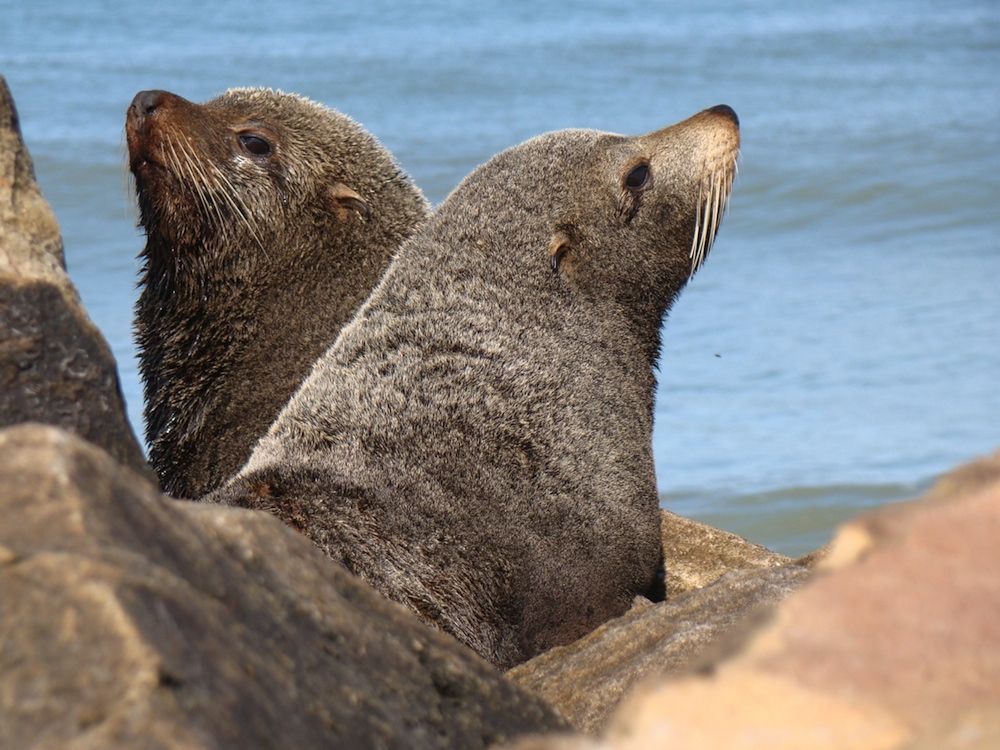The Odd Way Tuberculosis Was Brought to America

When European explorers landed in the Americas, they brought tuberculosis (TB) and a wave of other deadly diseases with them. However, some strains of TB may have already been lurking in South America, a new study finds.
In fact, these strains may have been brought to the Americas by seals and sea lions, researchers say.
A new analysis of three ancient Peruvian human skeletons that date to between A.D. 1028 and 1280 — well before Europeans landed on American shores — shows evidence of tuberculosis, including skeletal lesions and curved spines. [8 Grisly Archaeological Discoveries]
"It looked as though tuberculosis was present in the New World before [European] contact, based on these skeletons," said Kirsten Bos, the study's lead researcher and a postdoctoral fellow in paleogenetics at the University of Tübingen in Germany.
However, when the researchers reconstructed the genomes of the tuberculosis samples, they found the strains didn't fit into any branches of the disease that are commonly associated with human infection. Instead, "it was branching with the animals'" strains of TB, Bos told Live Science.
The new study also suggests that the common ancestor of the M. tuberculosis complex is just 6,000 years old, which is much earlier than the date suggested in a study published just last year. The previous study, whose authors included six of the same authors as the more recent study, concluded that the most recent common ancestor of TB was 70,000 years old, according to the paper, published in the journal Nature Genetics.
"These dates are worked out by measuring the amount of genetic diversity among all known strains of TB bacteria, and then using a molecular clock — based on the rate at which genetic changes occur during evolution — to work out how much time was needed for all that diversity to evolve," said Terry Brown, a life sciences faculty member at the University of Manchester in England, who was not involved in the study.
Sign up for the Live Science daily newsletter now
Get the world’s most fascinating discoveries delivered straight to your inbox.
A popular theory suggests that tuberculosis started in Africa tens of thousands of years ago and followed humans as they migrated out of the continent. But the earlier date prompted the question, "How on Earth did TB get to the New World less than 10,000 years ago?" Bos said. The Bering Land Bridge, a stretch of land that connected Russia to Alaska during the previous Ice Age, had already disappeared under the Bering Strait, she noted.
A colleague helped to answer the question. Sebastien Gagneux, an expert on modern tuberculosis at the Swiss Tropical and Public Health Institute, suggested that the three Peruvians caught the disease from seals that had once lived in Africa, and had swum to the New World.
"We all laughed; we were all thinking that was kind of a joke," Bos recalled. "Then, we got our hands on some seal TB sequences. We plugged them into our TB family tree, and wouldn't you know: They were branching with our Peruvian samples." [Gallery: Seals of the World]

TB is known to jump across species, and there have been cases of people who have caught bovine TB, Brown told Live Science in an email.
"The reason why there are fewer reports of humans catching TB from seals is because we don't come into contact with seals so much," Brown said. "There have been previous speculations among archaeologists that this might have been a source of TB infections in coastal areas of South America, where seals were hunted and possibly even farmed."
But with only three human skeletons, it's unclear whether the seal strains of tuberculosis infected many people, or just an isolated few. More human archeological evidence is needed to determine whether the strains transmitted from seals and sea lions were widespread in the early Americas, experts agreed.
What's more, the 6,000-year-old birth date of tuberculosis needs further scrutiny, researchers said.
"This estimate is, I think, the youngest estimate I've ever read," said Ruth Hershberg, an assistant professor of microbial evolutionary genomics at the Ruth and Bruce Rappaport Faculty of Medicine at the Technion (Israel Institute of Technology), who was not involved in the study.
Perhaps the bacteria that cause TB do not diversify at a constant rate, but rather have a pattern that speeds and slows over time, Hershberg said. "In order to address this, people will have to sequence more ancient samples to have more calibration points," she said.
Regardless of their age, the marine tuberculosis strains appear to have been completely replaced by European strains following contact, Bos said.
The study was published today (Aug. 20) in the journal Nature.
Follow Laura Geggel on Twitter @LauraGeggel and Google+. Follow Live Science @livescience, Facebook & Google+. Original article on Live Science.

Laura is the archaeology and Life's Little Mysteries editor at Live Science. She also reports on general science, including paleontology. Her work has appeared in The New York Times, Scholastic, Popular Science and Spectrum, a site on autism research. She has won multiple awards from the Society of Professional Journalists and the Washington Newspaper Publishers Association for her reporting at a weekly newspaper near Seattle. Laura holds a bachelor's degree in English literature and psychology from Washington University in St. Louis and a master's degree in science writing from NYU.











